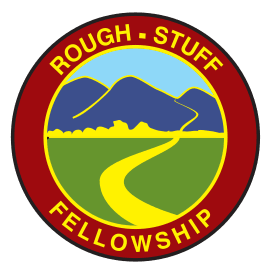 The Fellowship has always had a reputation for its 'characters'. Indeed, I have always found that to be one of its attractions. Our first president Sir Hugh Rhys Rankin must have been one of the first and foremost. His 1988 obituary in the Daily Telegraph described him as 'an extraordinary character whose eccentricity was remarkable even by the rarefied standards of the baronetage.'
The Fellowship has always had a reputation for its 'characters'. Indeed, I have always found that to be one of its attractions. Our first president Sir Hugh Rhys Rankin must have been one of the first and foremost. His 1988 obituary in the Daily Telegraph described him as 'an extraordinary character whose eccentricity was remarkable even by the rarefied standards of the baronetage.'
Hubert Charles Rhys Rankin was born in the middle of the Tunisian Desert in 1899. He came from a wealthy family who had made their fortune in the Canadian timber trade and shipping. His grandfather James Rankin (1842-1915) was a Conservative politician, made a baronet in 1898, and commissioned the building of the family home of Bryngwyn Hall in Much Dewchurch, Herefordshire. The family was granted a coat of arms comprising three boars' heads and three battle-axes around a cinquefoil. Hubert's father Reginald Rankin (1871-1931), the 2nd baronet, was a big game hunter noted for shooting the largest snow leopard on record in India, and for surviving being frozen after falling asleep in the Andes.
Hubert was to make several changes to his name by deed poll during his life. He changed Hubert to Hugh, and for periods was known as Omar, Sammy Parks, and Rankin Stewart but for the purpose of this article, I shall refer to him henceforth as Sir Hugh.
Sir Hugh was educated at Harrow but ran away to work in a Belfast shipyard before joining the 1st Royal Dragoon Guards. In 1921 he became the cavalry's broadsword champion. His military career was brought to an end through a sniper injury whilst posted to Ireland during the early years of what became known as the Troubles. He then devoted himself to sheep farming and was working as a shearer in Western Australia when he succeeded to the baronetcy in 1931.
During travels in the Middle East, and under the influence of another British aristocrat, the 5th Baron Headley, Sir Hugh converted from Christianity to Islam and adopted the name Omar. He succeeded Headley as president of the British Muslim Society in 1935 but resigned after a few weeks because they were very rude and knew nothing of law and order: I was disgusted with the whole lot of them.' He then turned to Buddhism and believed that one of Buddhism's Bodhisattvas (those who have achieved enlightenment) lived in the Cairngorms. He met annually with fellow believers in a Himalayan cave to decide the destiny of the world.
Sir Hugh served as a British army captain in World War II but later regretted it, writing 'if a revolution comes – and come it must after the next world war – I'll do my damnedest to see it succeeds.'
In 1950 Sir Hugh was elected to Perth County Council, having described himself as 'a bloody red militant communist in every possible way.'
Sir Hugh was appointed the first RSF president at its inaugural meeting in Leominster in May 1955 and served until 1959. He contributed journal articles with eye-catching titles such as '39 Miles without a road' and 'The most dangerous (non-climbing) trip in Great Britain.' He unveiled the Wayfarer memorial plaque on the classic Blwch Nant Rhyd Wilym route in 1957.
Sir Hugh was appointed a Fellow of the Society of Antiquaries (Scotland). In 1959 he declared his belief in the existence of Abominable Snowmen.
In 1965 Sir Hugh claimed he was the only baronet living on National Assistance (the predecessor of what we now call jobseekers' allowance). When asked what job he would like he replied 'anything except being a butler: I hate snobbishness.
Sir Hugh was a keen golfer and held the amateur record for the greatest number of courses played in the British Isles (382). His Who's Who entry also records that he crawled under dwarf fir forest whilst exploring the last half mile of the most northerly known section of any European Roman road, terminating at Kerriemuir Golf Club.
Sir Hugh died in 1988 and was survived by his second wife Lady Robina. His nephew Sir Ian Niall Rankin became the 4th baronet.
